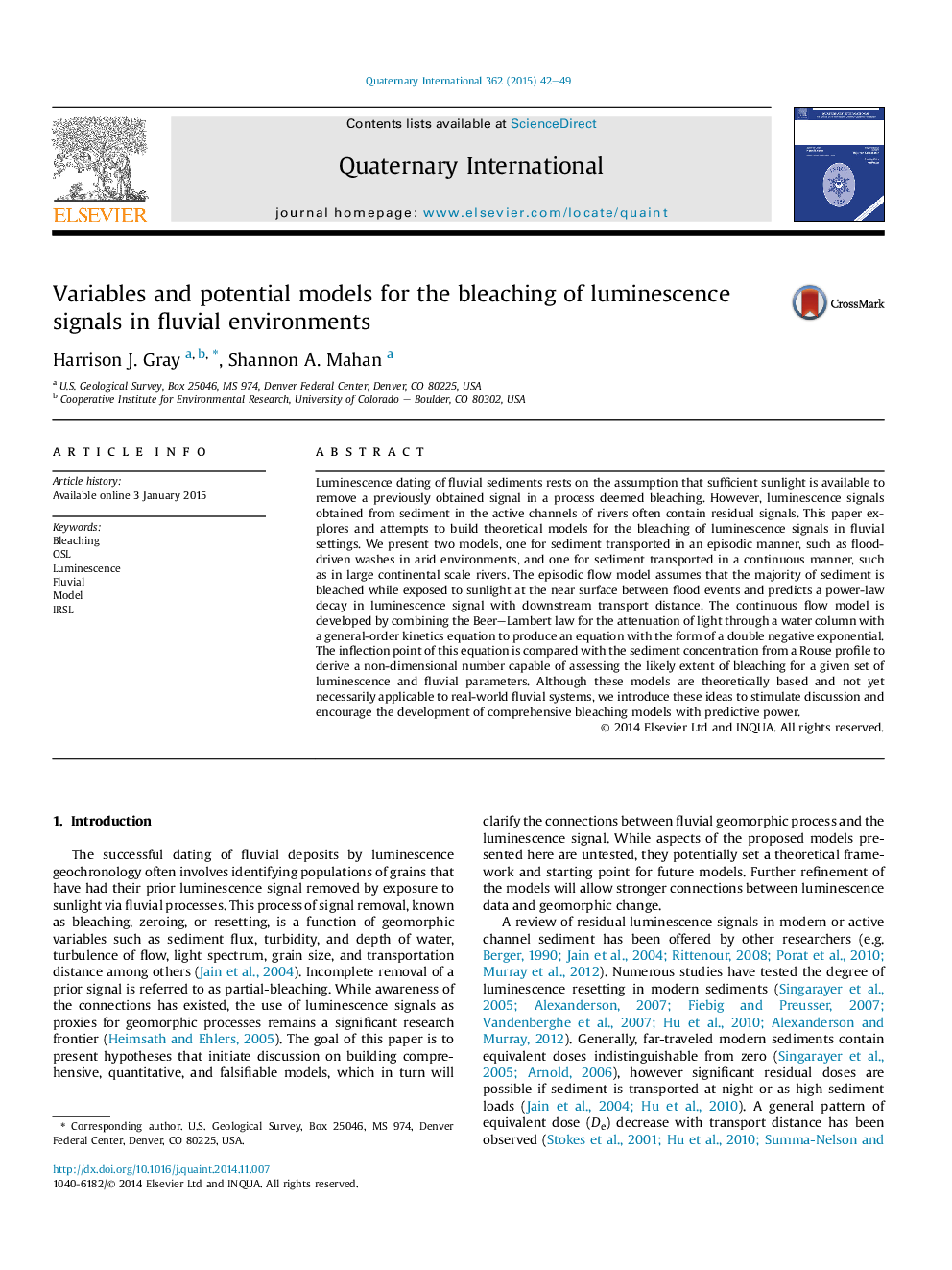| کد مقاله | کد نشریه | سال انتشار | مقاله انگلیسی | نسخه تمام متن |
|---|---|---|---|---|
| 1040839 | 1484135 | 2015 | 8 صفحه PDF | دانلود رایگان |
Luminescence dating of fluvial sediments rests on the assumption that sufficient sunlight is available to remove a previously obtained signal in a process deemed bleaching. However, luminescence signals obtained from sediment in the active channels of rivers often contain residual signals. This paper explores and attempts to build theoretical models for the bleaching of luminescence signals in fluvial settings. We present two models, one for sediment transported in an episodic manner, such as flood-driven washes in arid environments, and one for sediment transported in a continuous manner, such as in large continental scale rivers. The episodic flow model assumes that the majority of sediment is bleached while exposed to sunlight at the near surface between flood events and predicts a power-law decay in luminescence signal with downstream transport distance. The continuous flow model is developed by combining the Beer–Lambert law for the attenuation of light through a water column with a general-order kinetics equation to produce an equation with the form of a double negative exponential. The inflection point of this equation is compared with the sediment concentration from a Rouse profile to derive a non-dimensional number capable of assessing the likely extent of bleaching for a given set of luminescence and fluvial parameters. Although these models are theoretically based and not yet necessarily applicable to real-world fluvial systems, we introduce these ideas to stimulate discussion and encourage the development of comprehensive bleaching models with predictive power.
Journal: Quaternary International - Volume 362, 19 March 2015, Pages 42–49
